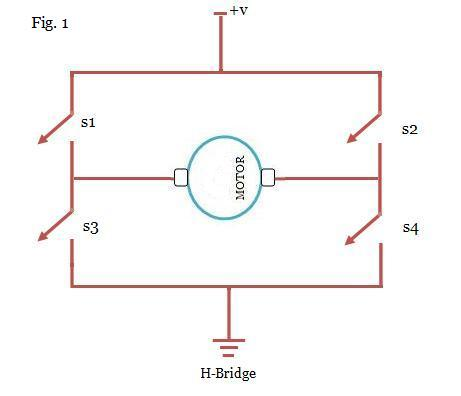wiki.
Newbie level 3

Follow along with the video below to see how to install our site as a web app on your home screen.
Note: This feature may not be available in some browsers.




Please help me out to understand how this H-brigde is working?
i tried but i couldn't make any sense.
i found it through google.it is attached in the form of image..
thanks

Dear,
its a simple circuit... when inputs A/B are LOW in that case Q5and Q6 will be in non conducting state..that is they will be OFF...and if they are off in that case they will not pull down the the base currents which is supplied by R1/R2 to Q1/Q4..making both Q1/Q4 to conduct/forward biased..and hence both of the motor terminals will be at supply VDC level...so Motor will be in STOP condition...
and if you just reverse the above condition at inputs A/B then you can see that maintaining both A/B input at HIGH level will turn Q1/Q4 OFF and also at the same time lower Q2/Q3 will conduct to ON...this all will bring motor terminals to ground level..again this will be a STOP condition for Motor...
from above explanations you can now understand how motor will be in forward/reverse condition when either of the A/B Inputs are HIGH...
Please try to go slowly and step by step in understanding any of electronic circuitry/schematic....then surely you will be able to get the logic involved...

